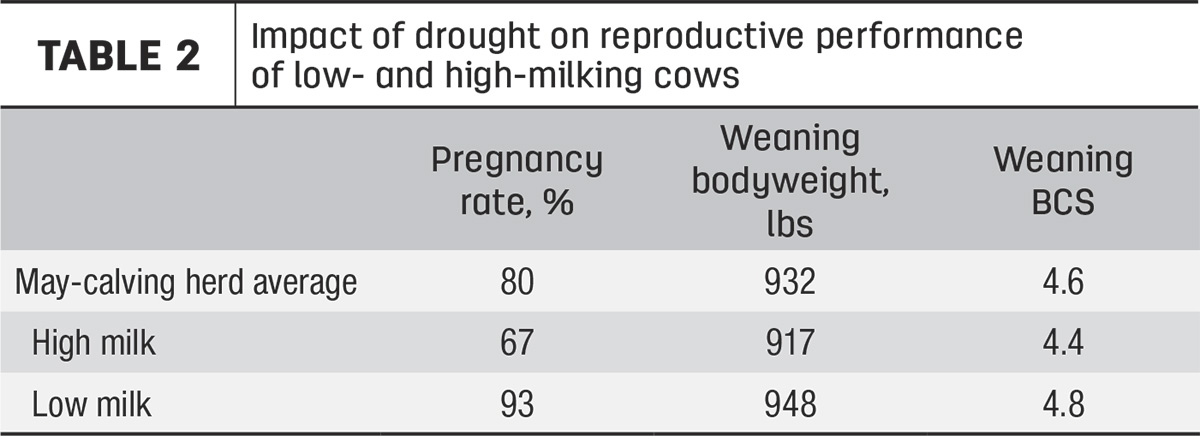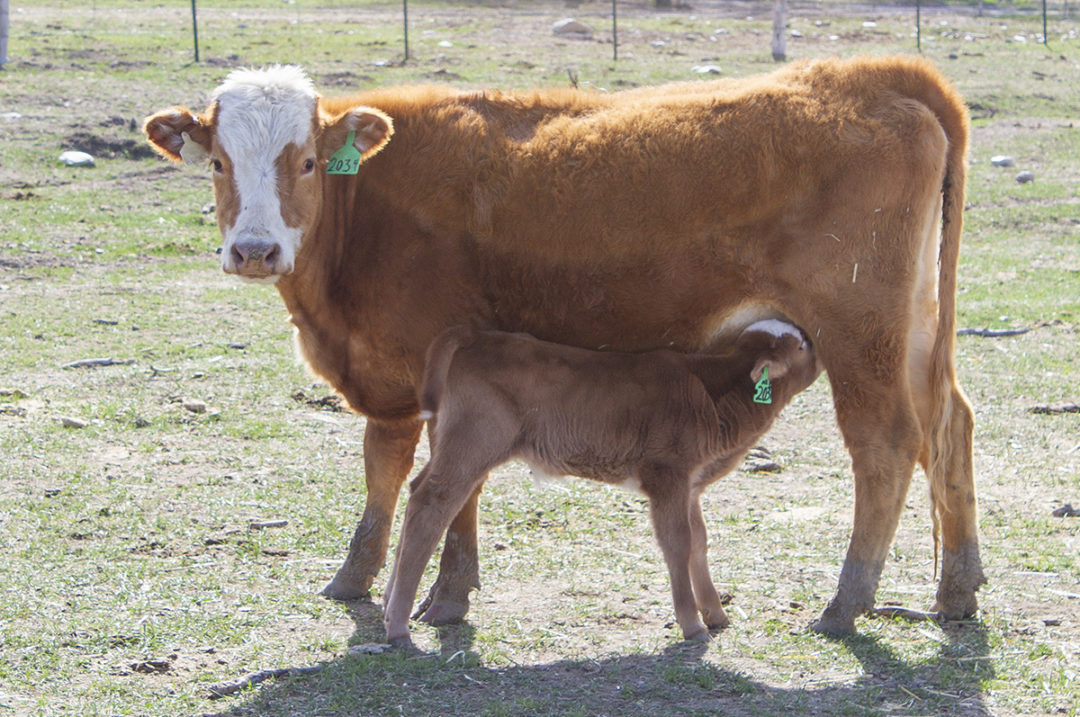Balancing forage resources (i.e., the environment) and cow requirements is a driver of production efficiency in forage-based beef systems. Selection for growth-oriented maternal traits has been a focus in the beef industry in an effort to maximize output. In doing so, cow-calf producers have tended to select for short-term traits such as growth and milk yield to increase weaning weights of calves for the potential to increase profitability.
In the past 20 years, genetic potential of the cow herd and production costs have steadily increased; however, production outputs (pregnancy rates and weaning weights) have been stagnant or declined. For instance, benchmarking data illustrates that calf weaning weight has been stagnant for the last 20 years or more. This data illustrates the impacts that environments play in limiting genetic potential for growth.
When cows are moving from mid- to late gestation, energy requirements will increase by 25% and protein requirements by 10%. Early lactating is where the greatest nutrient demand is occurring due to lactation, which will increase requirements until peak lactation, then decline from there. Table 1 illustrates the increased energy and protein intake differences to meet late gestation and early lactation requirements for a 1,200-pound mature beef cow with 20 pounds of milk production. As milk production potential increases in beef cows, cow maintenance requirements during gestation and lactation increase. For instance, energy requirements for cows with a high milk production required 11% more energy to support an increased level of milk production compared to low-milk cows. A good reminder is that lactation requirement or nutrient demand for milk has a greater priority than reproductive events.

The need for livestock producers to match cow size and milk production potential to forage resources in order to optimize forage utilization and reproductive efficiency is critical. Matching nutrient availability of the forage base with nutrient requirements of the cow has been recommended to efficiently utilize forage quality. Within a specific environment and production system, calving season plays a big role in the optimal milk production potential. Ranches moving from a spring to summer calving season may need to reevaluate herd milk production, which is particularly an issue when breeding on declining forage quality during mid- to late summer. Inadequate nutrient intake to meet production energy requirements can result in reduced reproductive performance.
In a study conducted in my labs while at the University of Tennessee, we determined the impact on milk production where cows were retrospectively classified into one of three milk yield groups: low (14 pounds per day), moderate (20 pounds per day) or high (26 pounds per day).
Pregnancy rates after artificial insemination were 11% and 13% points lower for high-milk cows compared to moderate and low cows, respectively. The decreased pregnancy rate after artificial insemination in the high-milking cows continued through the entire breeding season, with high-milking cows having the lowest overall pregnancy rates. Interestingly, milk production level did not increase calf weaning weight. Even with the nearly double milk production from low to high, calf weaning weights were not different among the three groups. A cow milking 14 pounds per day weaned the same size of calf as a cow milking 26 pounds per day. However, the production costs between the two are drastically different, with costs being greater in the 26-pound-producing cow. In general, calves from lower-milking cows tend to graze more in order to offset the lower consumption and availability of their dam’s milk yield, which can provide similar average daily gains if forage quality is high.
Calf weaning weight has been shown to have as low as a 5% influence on profitability on the ranch. With selection of milk, we are chasing a mere 5% influence on profitability. On the other hand, the economic value of reproduction is reported to be five times greater than calf growth or milk traits. In addition, increased milk production increases production costs and inputs. With feed costs, which typically run between 60% to 75% of total annual cow costs, matching cow type or genetic potential to the production environment is and will be more important as the cost of production increases.
In addition to the increased costs to have cows have greater capacity for milk production, increasing genetic potential of milk production also increases a ranch’s production risk, which is especially important in terms of drought and contingency plans. To mitigate as much production risk as possible, genetics of the cow herd need to be able to be adaptable to drought and other events that would influence quality and quantity of feedstuffs. Table 2 illustrates the impact of drought on reproductive efficiency in high- and low-milking cows from a study conducted in Nebraska. As milk production increased, the ability of the cows to adapt to the declined forage quality resulted in thinner cows and decreased pregnancy rates. In this instance, more nutrients in early lactation had to go to support milk before nutrients were available for reproduction.

With current trends of selecting for increased output-oriented traits in purebred and commercial herds in the U.S., average milk production at peak lactation has been steadily increasing. The continual increase in selection for milk production in beef cows increases the nutritional stress in critical periods, such as the start of the breeding season, and can ultimately reduce reproduction and/or increase production costs to maintain performance. Moderation in selection for milk can allow for decreased production risks, especially with increased drought and climate variability.









